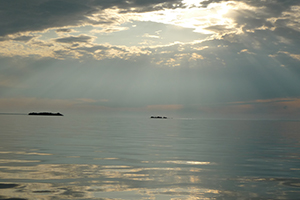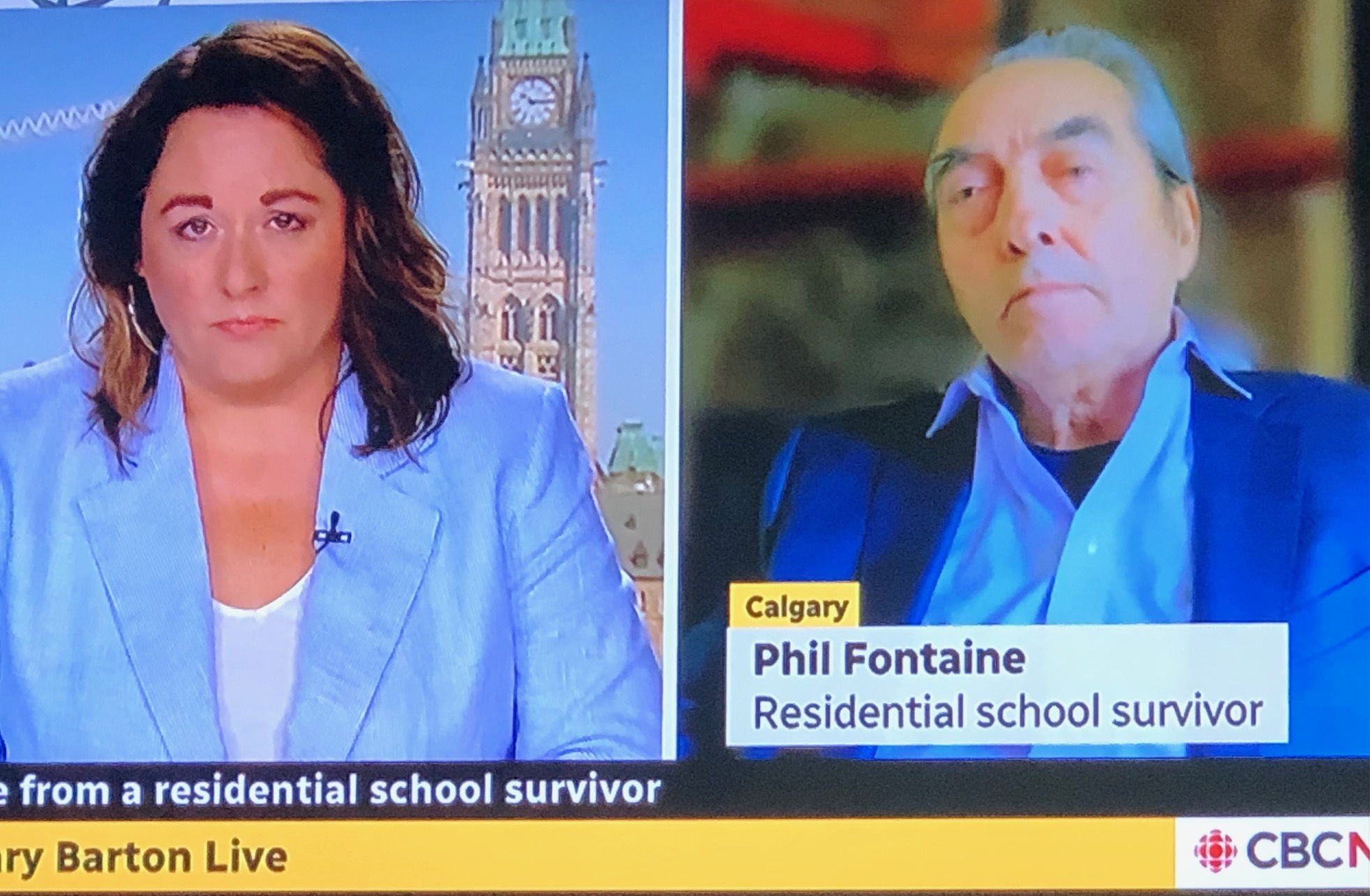A Career in the Spaces Between

So What Do You Do? “I Lead Without Owning”
November 7, 2016
Reconciliation: What Will It Take? (Part One)
November 15, 2016When you Work in the Cracks, You See the World Differently
Glenn Sigurdson has helped others reach tough decisions, and resolve deeply embedded differences in a path-breaking career. His book, Vikings on a Prairie Ocean, describes the people, places and cultures of Lake Winnipeg that influenced Glenn and informed his life’s work. In this excerpt, Sigurdson shares perspectives and insights that reveal why he is a leading thinker, practitioner, and teacher in his field.
I often say I work in the spaces between A, B, C, D and E. In the courses I teach, I sometimes draw a few circles in a cluster and ask folks what they see. Not surprisingly, they say a bunch of circles. Then I draw a circle around the circles and ask what they see. Most say a bunch of circles inside a circle. The more creative types occasionally suggest pepperoni pizza, or maybe an Easter basket. Only one person, a First Nations guy, has ever said “the space between.” Eventually, I shade in the areas between the circles. And that, I tell them, is my workstation. My job is to understand the big and little things that happen inside that space. Sometimes I use a picture of the intricate little gears inside a Swiss watch working to keep time with precision, the failure of any one of which will grind the mechanism to a halt.
Next, I ask the students to name each circle after an organization. Their imaginations now energised, the possibilities start to flow. If it’s a business class, they may suggest a bunch of companies, maybe a supply chain. Soon the list widens out to include external players with which businesses must interact to be successful: corporations, government agencies and departments, indigenous communities or unions, for example. Inside each organization lives a spectrum of interests and a cascade of decision makers. Inevitably, there are tensions and frictions up and down and across the organization. Finance and legal, engineering and human resources, all have their own turf, their own ways of doing things, and their own vice presidents. It’s the same in government agencies and ministries, and NGOs too have divisions between their wonks and their warriors.
I explain to the classes that the alphabet surrounding me is almost always made up of groups of some kind, large and small. My real-life circles are multiple parties with diverse views of the world and their places within it. It is a world where people worry about themselves, but also speak for others. More often than not, the complex collage of interests I encounter are nested in resource, environmental or land use issues, often with First Nations interests at stake. I have worked most everywhere in Canada—every province and territory, every major city, and small settlements across the country. My assignments have spanned a diversity of sectors and situations: energy to water, rendering plants to nuclear waste, municipal conflicts to treaty negotiations, hydro utilities to mining projects, sky trains to pipelines, and the list goes on.
I have worked with complex organizations from companies to governments to achieve greater alignment and integration across internal divides, and as far afield as Papua New Guinea, Lima, Berlin, and London. Sometimes I operate with organizations like school boards, wine festivals, and many different kinds of non-governmental organizations. Sometimes it is with global companies; other times they are as small as a community fish plant. In each, power and authority meet fear and hopes. Each player sees the world through different lenses, and the world sees them—the attributes and beliefs that define them—as it will.
The relationships of which I speak are between and among groups and organizations. Interpersonal chemistry between individuals is helpful, but not sufficient. To be durable and resilient, relationships must withstand the constant migration of people in and out of organizations (like roofing companies or autoplan brokers) Relationships require structure. (between roofers or lawnmowers) They must be flexible and adaptive. And they are based on the capacity to deal with the inevitable differences that arise as problems, people and context evolve over time. It is differences in perspectives, talents, resources, histories and beliefs that give any society energy. The challenge is not the fact of the difference, it is how to deal with our differences. ”Differences are OK.” Respecting that diversity is key to managing together how we can live with it, making our differences work for us, not against us. Diverging perspectives are opportunities to deepen and strengthen relationships as parties build abilities to deal with difference.
I work in busy places, but my space is lonely. Usually I work alone, or with one or two colleagues. Working in the middle of other people’s “wars” is not easy. The work has been pioneering. To be sure, there have been intermediaries throughout history. That role is as old as civilization, but it has been implicit and pragmatic, and not the subject of study and research. Only in the last forty years has there been increasing focus on research and practices associated with the resolution of complex, multi-party situations, often with a public dimension, through negotiation-based strategies. A distinct body of practice and knowledge, and a small but very experienced professional community has developed. I am privileged to have been part of building that community.
When all the fancy covers are pulled back, organizations are just a bunch of people, and wars are a bunch of people fighting. The people business is tricky business. Logic takes a back seat, as hard as some would like to fight that reality. When it comes to people, if you want to work on the big stuff, sweat the small stuff. What is small to some is big to others. People’s hearts measure the small stuff—the gentle kindnesses, the marks of trust. The participants in a complicated tangle involving a marina on Haida Gwaii years ago gave me a plaque that sits above my desk. It is a quotation from the Chinese philosopher Lao Tzu, written in the sixth century BC:
Go to the people. Learn from them. Live with them. Start with what they know. Build with what they have. Work with the people, love the people and when the work is done they will say that they have done it themselves.
I have come to understand that the wellspring of this ancient wisdom is respecting people’s “right to be” who they are, and that means that before agreeing or disagreeing with what they say or do I must first hear them to understand them. I gave a talk some years ago to the American Fisheries Society. I called it “Fish and People: Who is Eating Who?” Fish have been central to my life from the beginning, and professionally I have been in the middle of a lot of “fish wars,” but that has been only one component of a very diverse body of work. You can learn a lot from fish, and from the people whose lives and lifestyles revolve around them. I have taken that experience and wisdom and applied it in many different contexts. There are no more complex problems than those of a fishing identity and culture. They embrace the past and the future, mystery and uncertainty, traditional knowledge and scientific reasoning, knowns and unknowns, lives and livelihoods. If you can work on fish problems, you can work on anything. My place in the world is grounded in people and fish, and that in the deepest sense of the word, is “home.”


